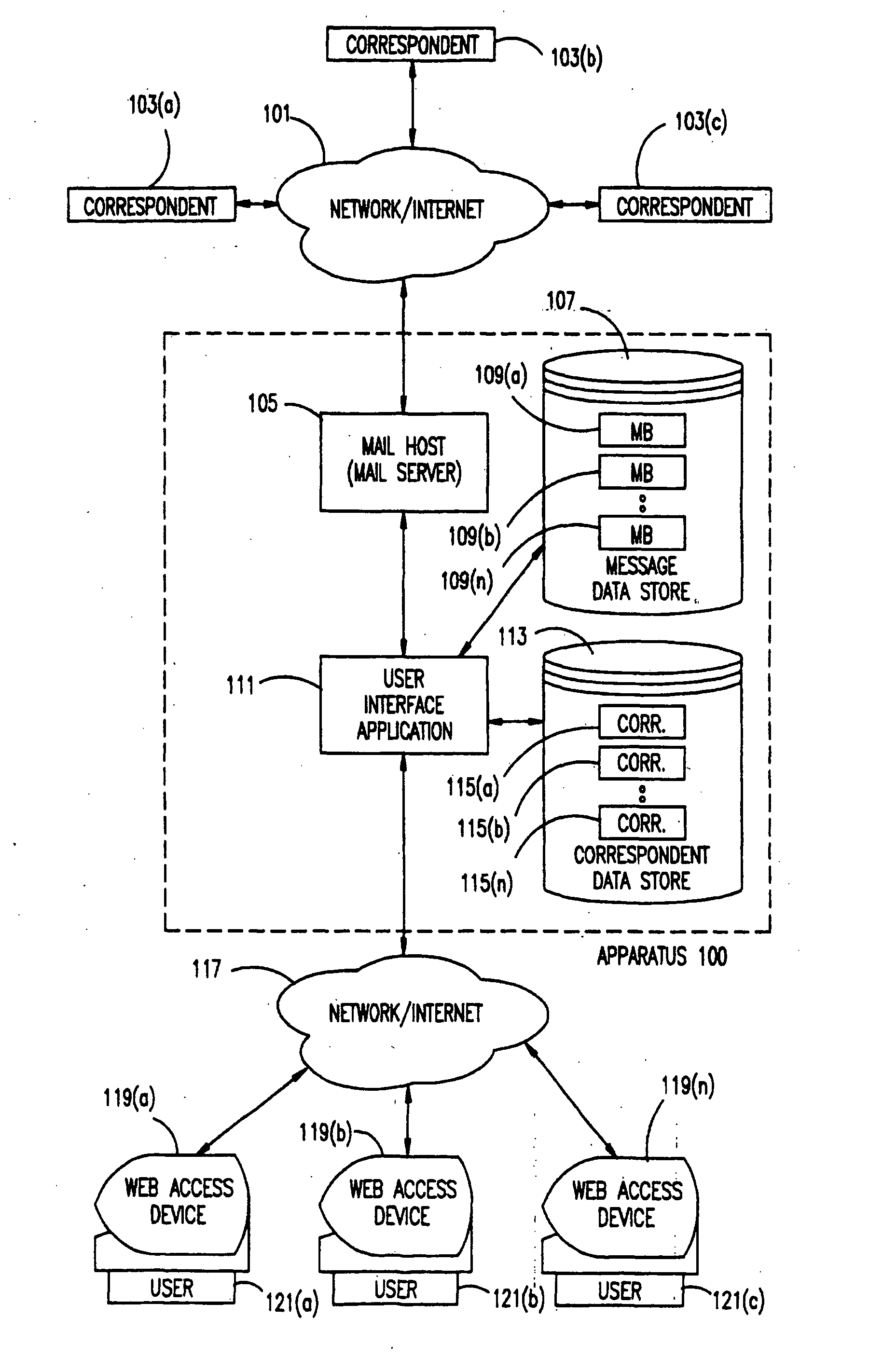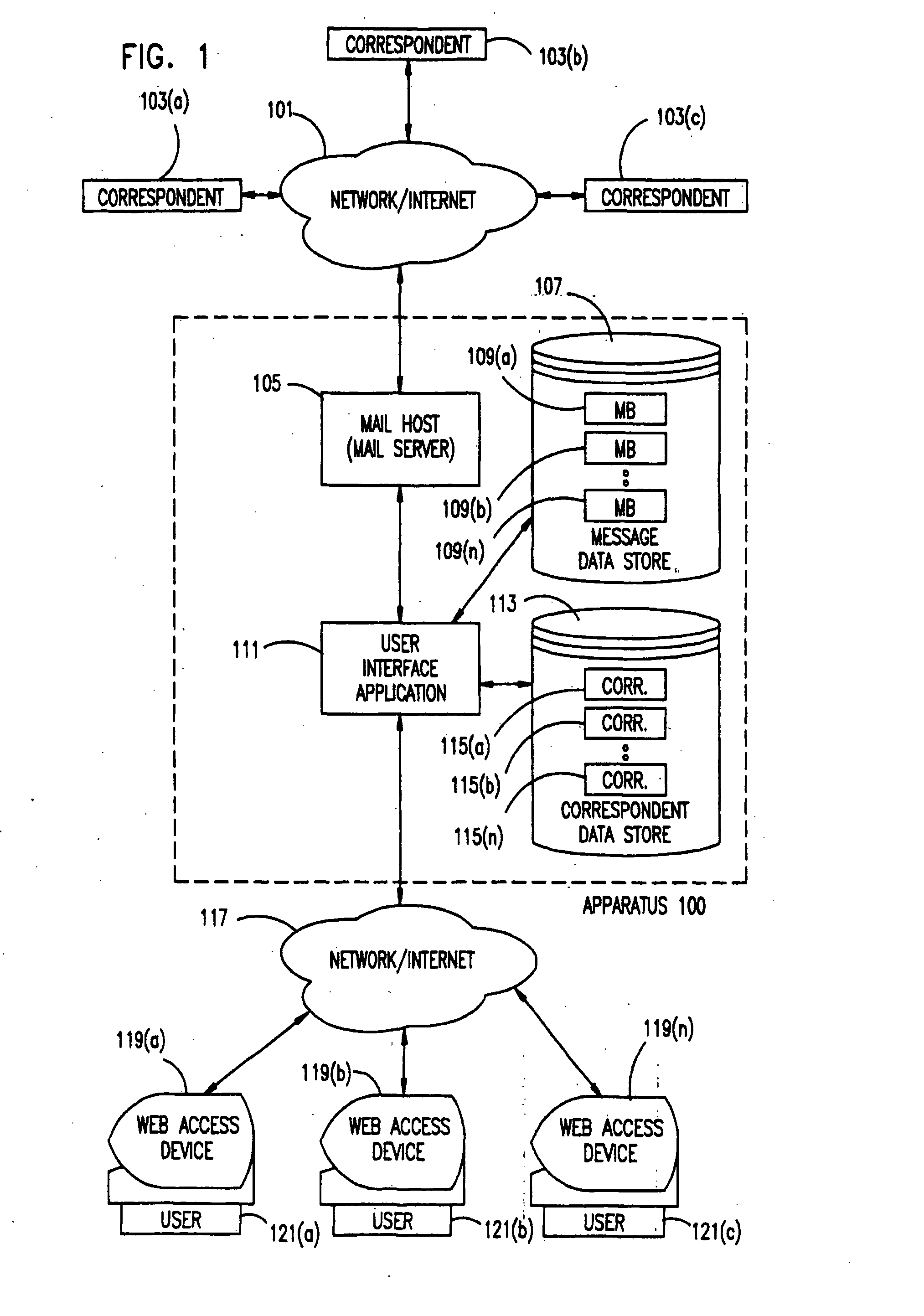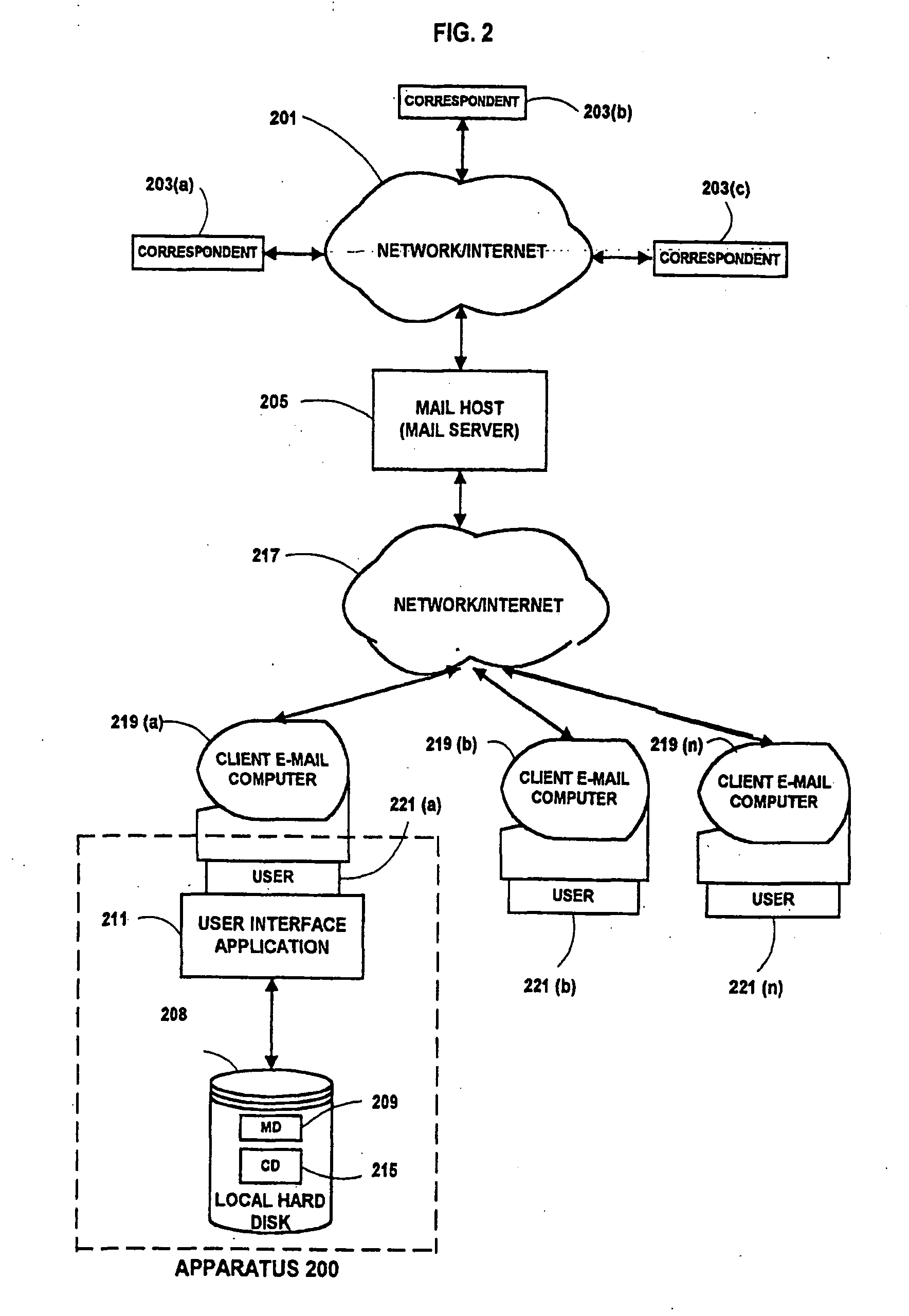Apparatus and method for effecting correspondent-centric electronic mail
a correspondent-centric, electronic mail technology, applied in the field of electronic mail, can solve the problems of difficult use of the e-mail system, excessive junk e-mail for users, and process typically requires manual effort or programming on the user's part, and achieve the effect of enhancing the protection against junk e-mail
- Summary
- Abstract
- Description
- Claims
- Application Information
AI Technical Summary
Benefits of technology
Problems solved by technology
Method used
Image
Examples
Embodiment Construction
[0070] The following description begins with an overview of the invention and then describes in detail how the invention is implemented in apparatus to provide a user-friendly correspondent-centric interface and reduce junk e-mail.
[0071]FIG. 1 shows a high-level overview of the preferred embodiment of the invention, and is shown as apparatus 100. This embodiment assumes that clients will access their e-mail through the Internet using a Web browser installed on any Internet access device. (This configuration will be further described below.)
[0072] Apparatus 100 is employed in network 101 which connects any number of e-mail users or correspondents 103(a . . . n). Network 101 may be the Internet, a commercial e-mail network, or a privately owned network system. Each correspondent 103 is connected to network 101 by means of a link over which the correspondent 103 can send and receive e-mail messages. Mail or message items are sent by correspondents 103 to and from each other. Apparatu...
PUM
 Login to View More
Login to View More Abstract
Description
Claims
Application Information
 Login to View More
Login to View More - R&D
- Intellectual Property
- Life Sciences
- Materials
- Tech Scout
- Unparalleled Data Quality
- Higher Quality Content
- 60% Fewer Hallucinations
Browse by: Latest US Patents, China's latest patents, Technical Efficacy Thesaurus, Application Domain, Technology Topic, Popular Technical Reports.
© 2025 PatSnap. All rights reserved.Legal|Privacy policy|Modern Slavery Act Transparency Statement|Sitemap|About US| Contact US: help@patsnap.com



